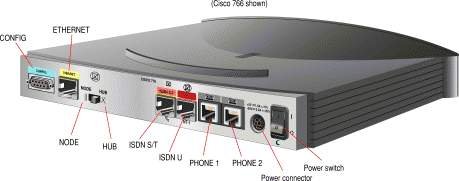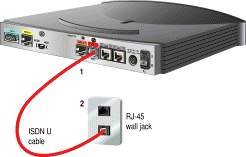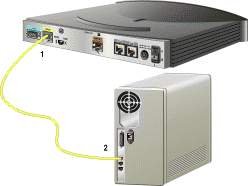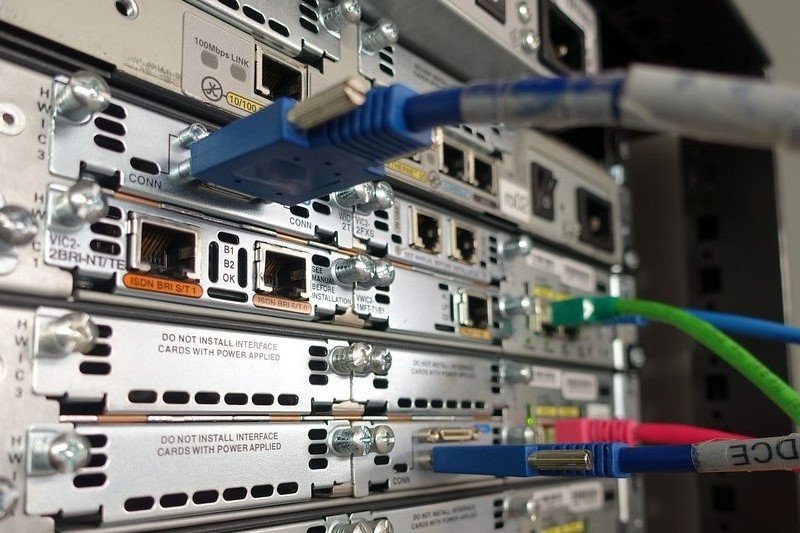Understanding the Main Components of Cisco Routers: An Essential Overview
Cisco Routers: Cisco is known for its routers and switches. The Company Produces High-Quality Products That Rarely Cause Problems, And You Do Not Have To Be Involved After Installation.
In this article, we focus on routers. Cisco routers are very diverse, but the 880, 2900, and 3900 series are the most popular.
Below is a picture of some of the Cisco routers.
 We want to introduce you to the essential components of a Cisco router and explain how to use them.
We want to introduce you to the essential components of a Cisco router and explain how to use them.
The main components of a Cisco router:
- Relations
- CPU
- IOS
- RXBoot image
- RAM
- NVRAM
- ROM
- Flash Memory
- Configuration Register
Relations
Interfaces allow us to use the router. Connections are serial ports or Ethernet ports that connect a router to our LAN. Many types of relationships exist, but we will focus on the most important ones.
Some of the letters that Cisco has given to interfaces are E0 (first Ethernet interface), E1 (second Ethernet interface), S0 (first serial interface), S1 (second serial interface), BRI 0 (first B channel for the main ISDN), and BRI 1 (the second B channel for the main ISDN).
In the image below, you can see the back view of the Cisco router. Its various connections are visible (ISDN routers only)

If you look closely, you will see that this router also has a telephone socket because it is an ISDN router that connects the digital phone to the ISDN line. However, you should know before you buy that you usually do not get routers with an ISDN S / T and ISDN U interface together.
Each ISDN line requires a Terminator Network (NT) installed on the client side, after which you connect your equipment. The ISDN S / T interface does not have an NT device, so you need one to use the router. On the other hand, an ISDN U interface has an NT device built into the router.
To see how the router connects using different ISDN interfaces, see the image below:

In addition to ISDN interfaces, we also have an Ethernet interface that connects to the device on your LAN, usually a hub or computer.
If connected to the uplink Hub port, set the small switch to “Hub,” but if connected to a computer, you must set it to “Node.” This switch converts the cable from straight through (Hub) to x-over (Node).

Its console port is a Female DB9 connector that connects to your computer’s serial port using a dedicated cable, allowing you to configure the router directly.
CPU
All Cisco routers have a central processor that performs the essential functions of a router. The processor generates IRQs to communicate with other electronic components of the router. Cisco routers use Motorola RISC processors. In a typical router, CPU usage usually does not exceed 20%.
Internetwork Operating System (IOS)
IOS is the router’s central operating system. It loads in the boot processor process and usually has a size between 2 and 5 MB, but it can be much larger depending on the router series.
IOS is currently on version 12, and Cisco releases sub-versions such as 12.1 and 12.3 every few months to fix minor bugs and add additional features.
On the 1600 series and above, you get iOS on your PCMCIA flashcard. Then, the flashcard is inserted into the slot on the back of the router, and the router loads the IOS image. This operating system image is usually compressed, so to use it, the router must decompress it in its memory.
IOS is one of the most essential parts of a router; without it, the router is almost useless. Remember that you do not need a flashcard to load iOS (as described above with the 1600 Series router). You can configure most Cisco routers to load the operating system image from a TFTP network server or another router holding multiple IOS images for different routers.
RXBoot image
The RXBoot image, also known as the Bootloader, is nothing more than a cut-down version of iOS in the router’s (read-only) memory. If you do not have a flashcard to load iOS, you can configure the router to load an RXBoot image, which allows you to perform minor operations and set up and down various relationships.
RAM (Random Access Memory)
RAM, or random access memory, is where the iOS router and the configuration file are loaded. It works like your computer’s memory, where the operating system loads various programs. The amount of RAM your router needs depends on the size of your IOS image and configuration file.
To show the amount of RAM we are discussing, in most cases, 12 to 16 MB is enough for smaller routers (up to 1600 series).
Larger routers with larger IOS images, on the other hand, require 32 to 64 MB. Routing tables are also stored in the system RAM, so you will need more RAM if you have large and complex routing tables.
(Non-Volatile RAM) NVRAM
NVRAM is a special memory that the router uses to store its configuration. When you configure the router and then save the configuration, it is saved in NVRAM. This memory is not large at all compared to the system RAM. The Cisco 1600 series is only 8 KB, while on larger routers, such as the 2600 series, it is 32 KB.
Typically, when a router is set up, it loads the configuration file from NVRAM to configure the router after loading the IOS image. NVRAM will not be erased when the router is reloaded or turned off.
(Read-Only Memory) ROM
The ROM sets up and maintains the router, including some code and applications, such as Bootstrap and POST. When turned on or reloaded, these programs help the router perform initial tests and boot processes. You can not modify, add, or delete any code in this memory because this memory is read-only.
Flash Memory
Flash memory is the same card we talked about in the iOS section. It is just an EEPROM card (programmable and erasable memory). This card sits in a special slot, usually on the back of the router, and is nothing more than iOS images.
You can delete its contents via the router console. The size for smaller routers (1600 series) is usually 4 MB and can be increased depending on the router model.
Configuration Register
The Configuration Register determines whether the router intends to boot the iOS image from its Flash or TFTP server or load the RXBoot image.
This is a 16-bit register, which means it has 16 zeros and one. An example of this is hexadecimal or base 16, 0x2102, whose binary is 0010 0000 0001 0010.
FAQ
What are the primary hardware components inside a Cisco router?
Some of the main components include interfaces (Ethernet, serial, console ports), CPU (processor), RAM, NVRAM, ROM, and Flash memory.
What is the role of Flash memory and NVRAM in a Cisco router?
Flash memory stores the operating system image (IOS) and can be updated, while NVRAM stores the startup configuration file that remains even after power-off.
What is the configuration register used for in a Cisco router?
The configuration register is a special 16-bit value that determines how the router boots—whether from Flash memory, a TFTP server, or a minimal RXBoot image.
